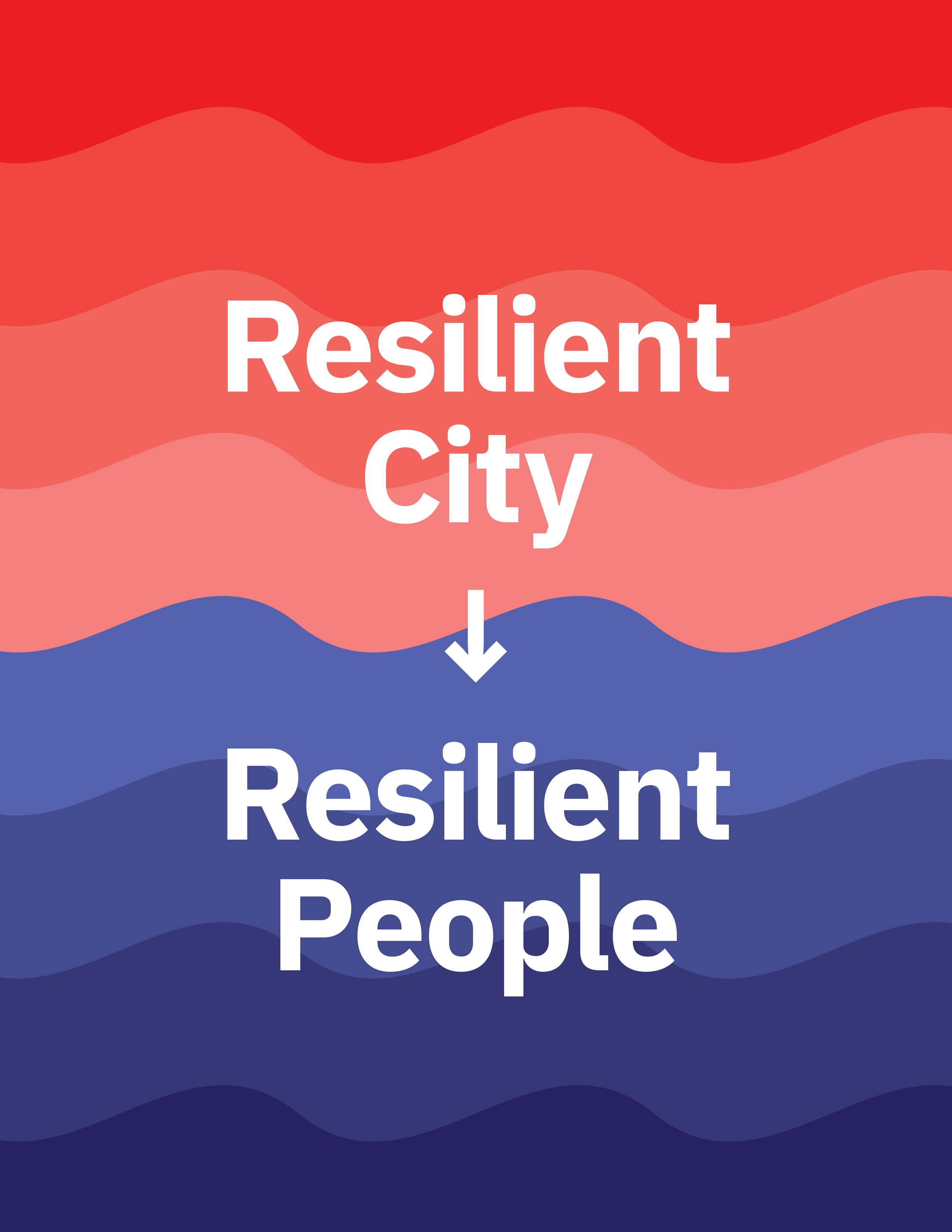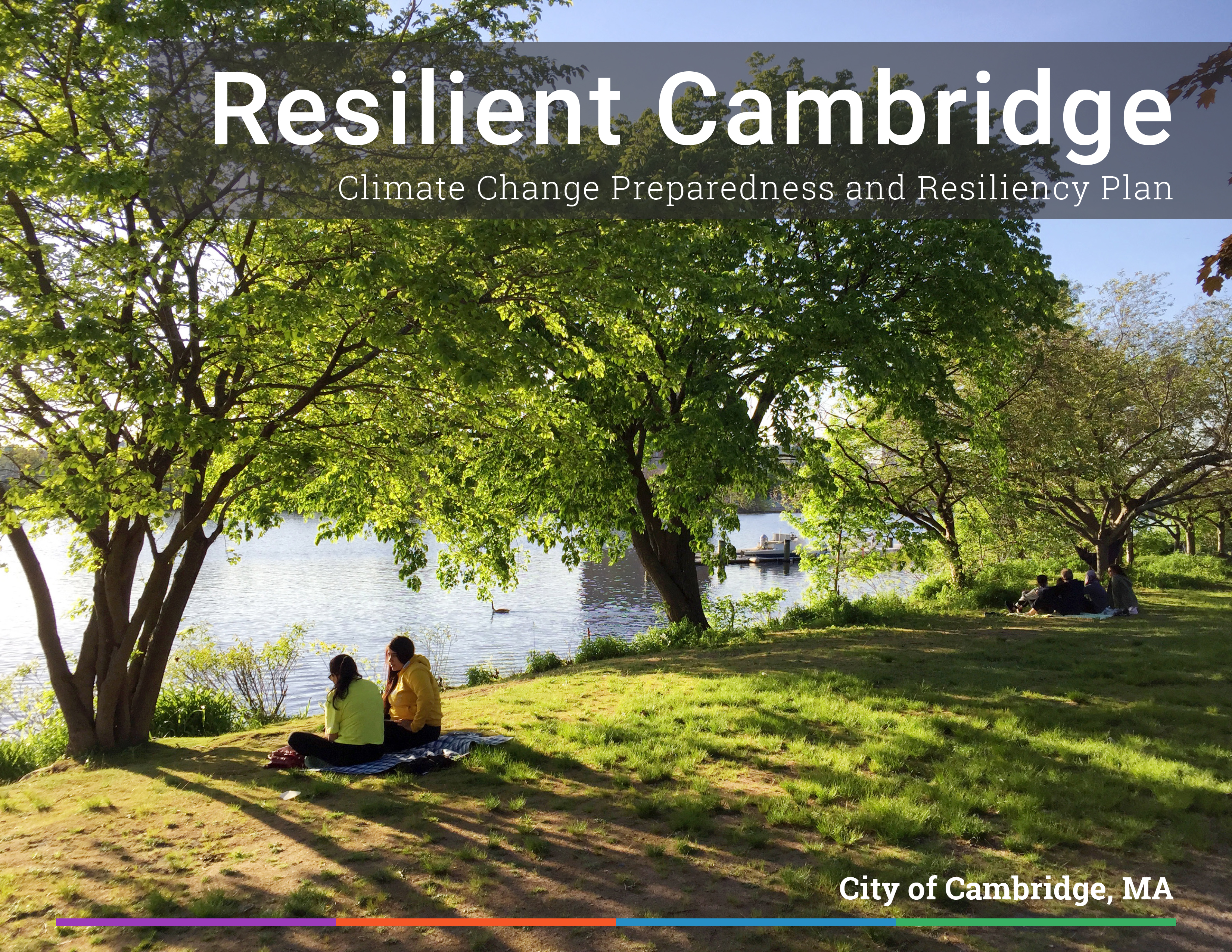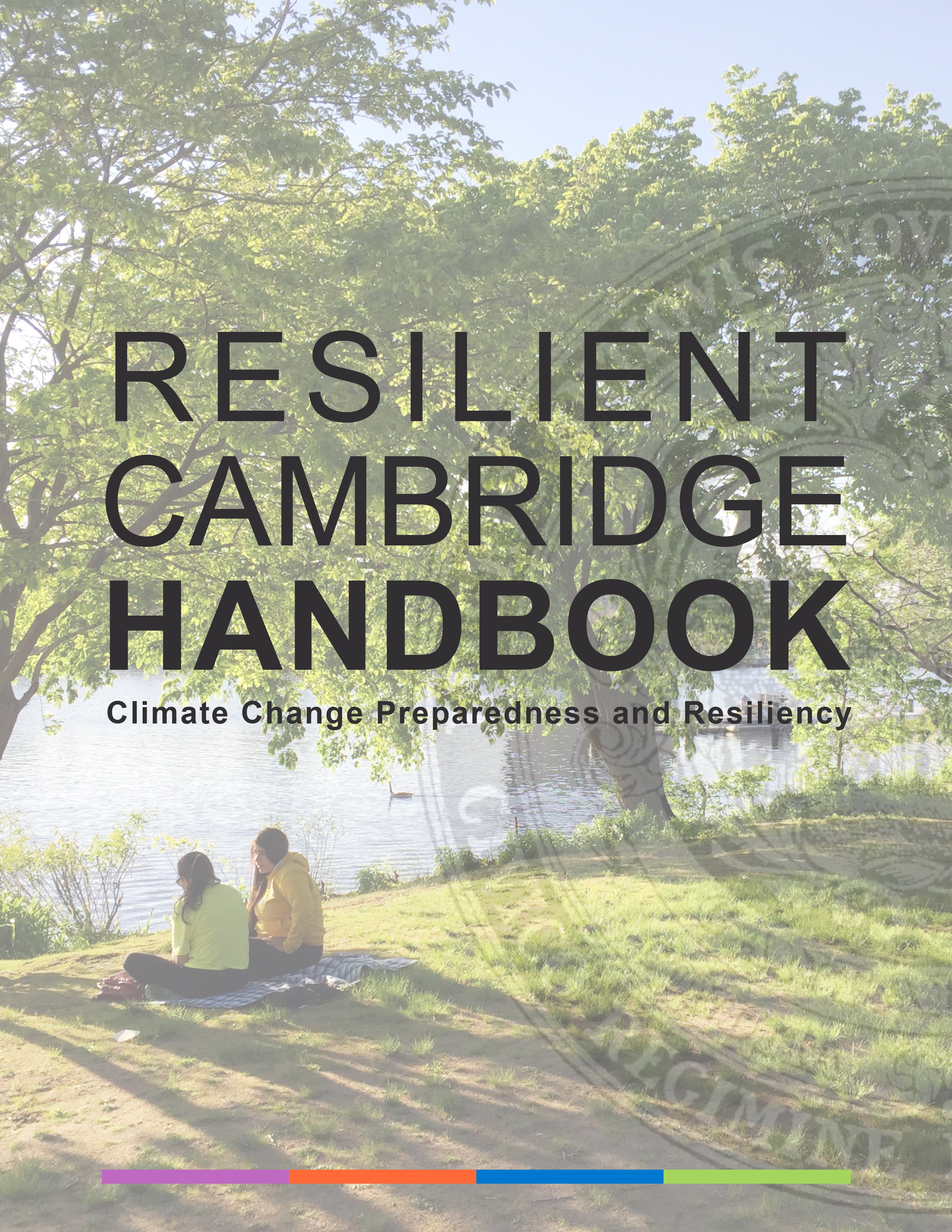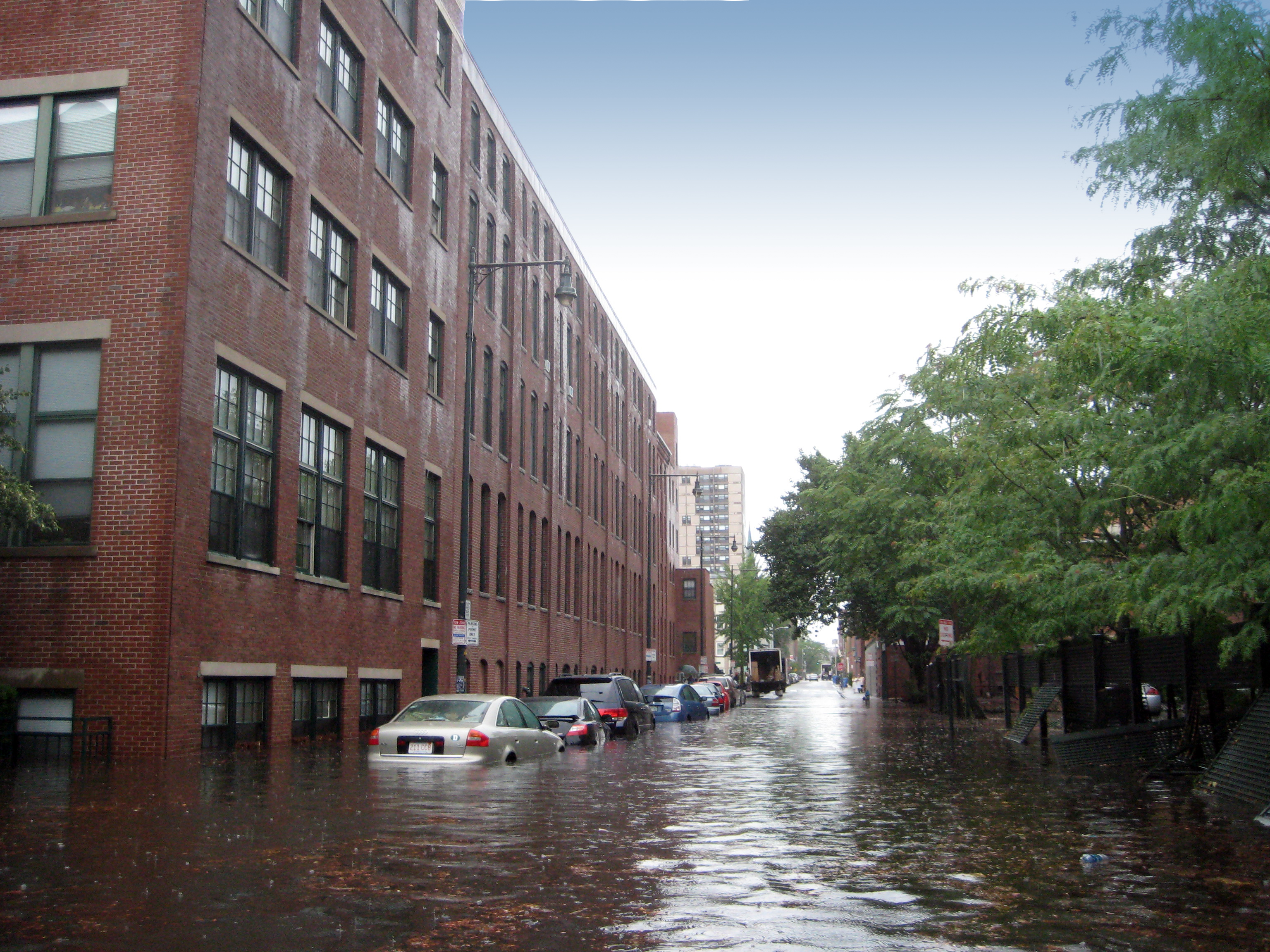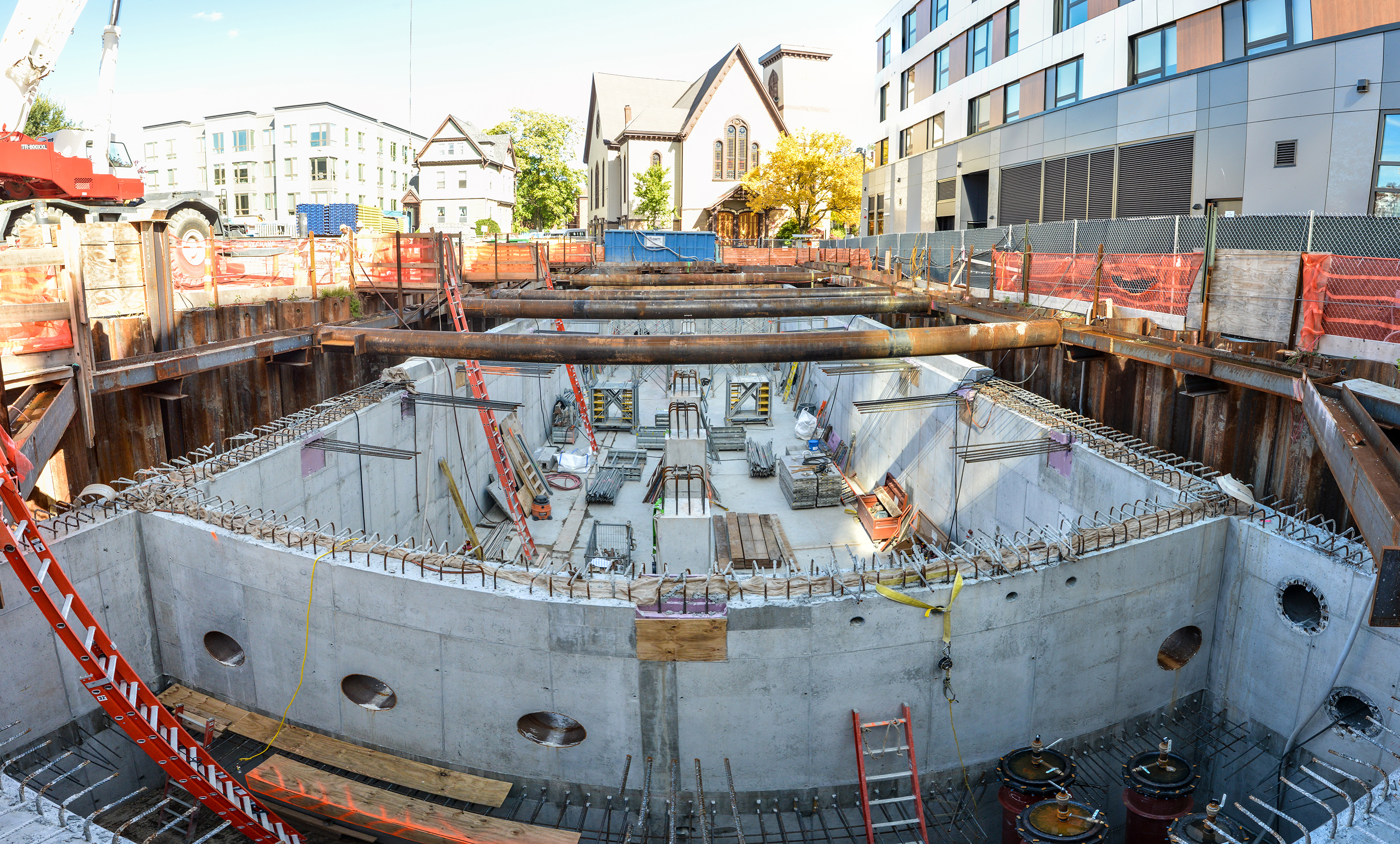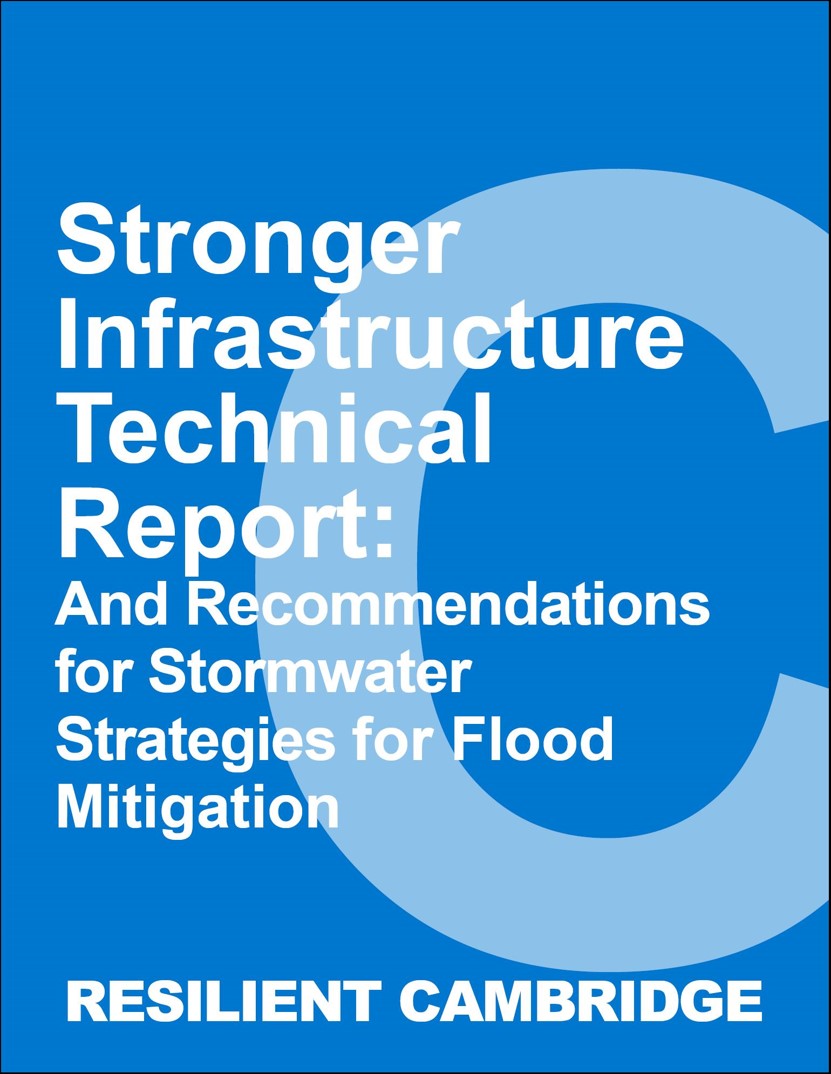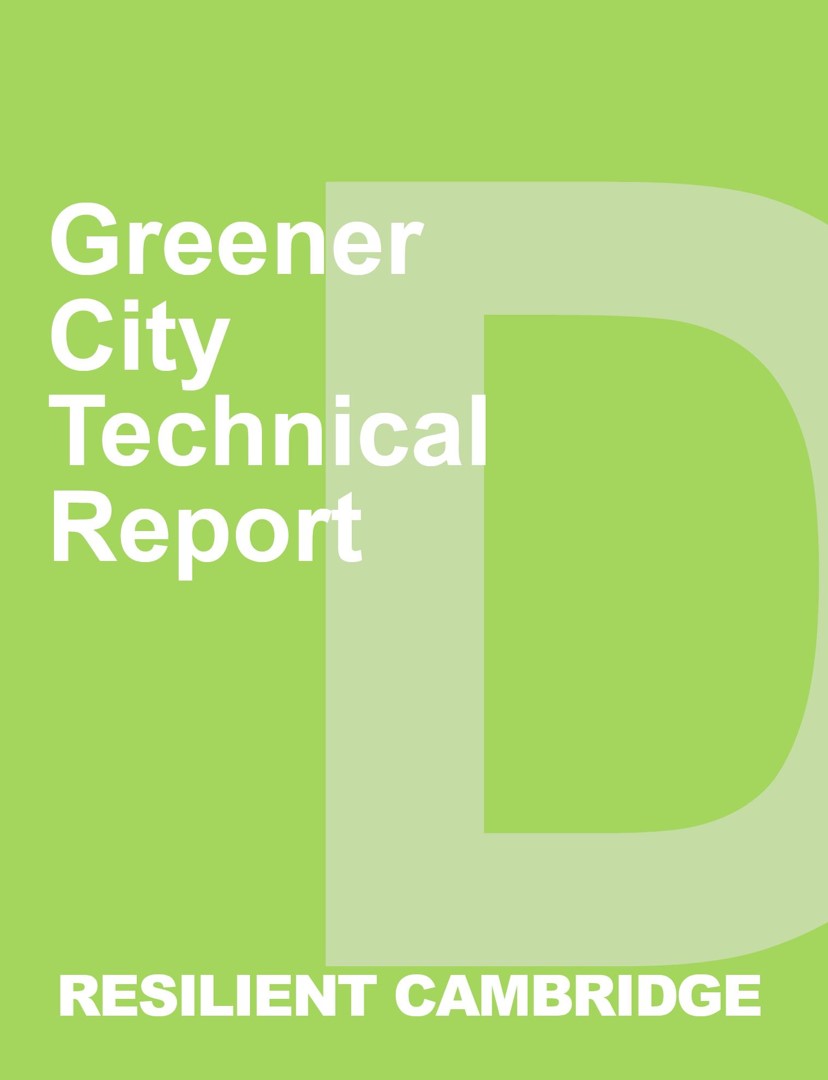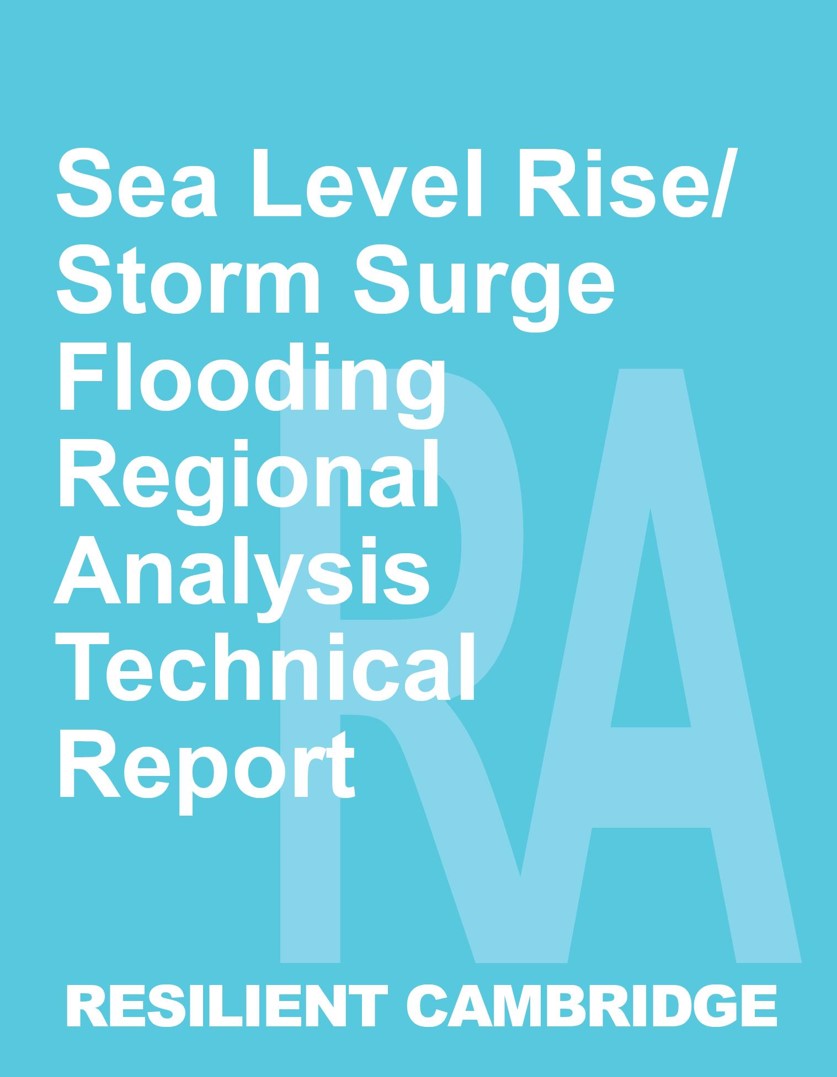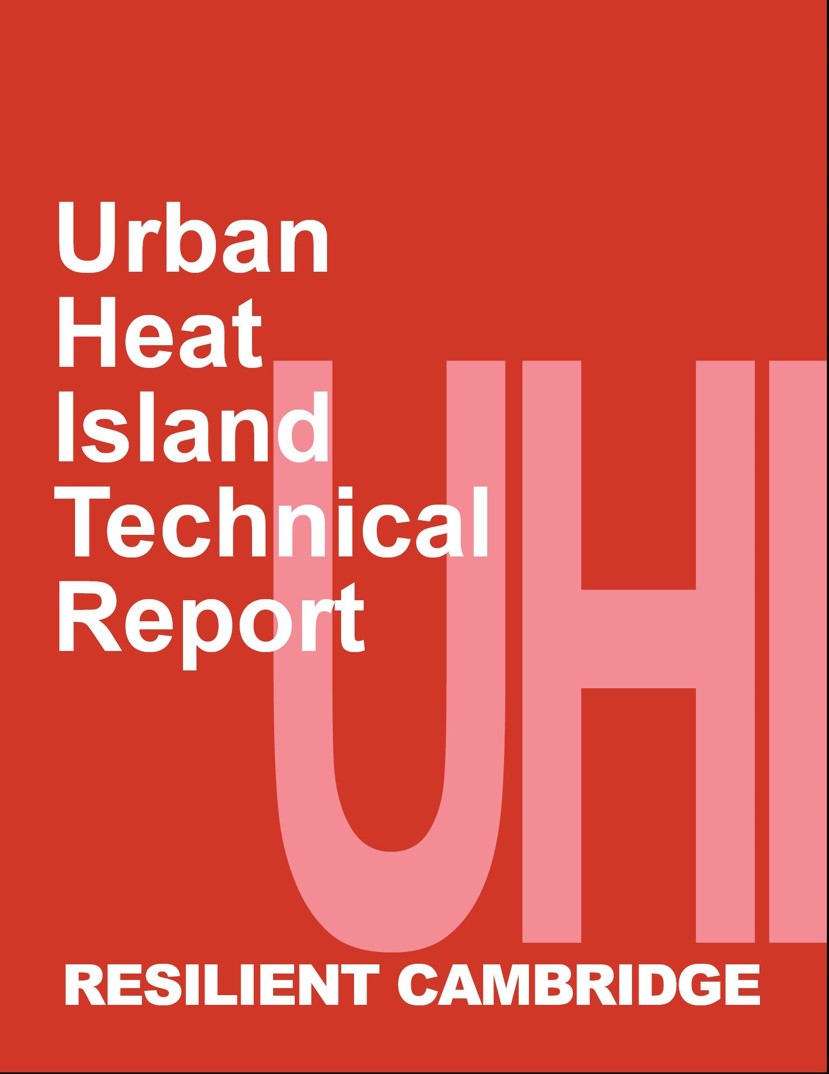Resilient Cambridge Plan
The Resilient Cambridge Plan is the City's roadmap to reduce the risks from climate change and prepare the community for impacts that cannot be avoided. The Plan focuses on the threats from increasing temperature, precipitation, and sea level rise. Using projections to 2030 and 2070 based on the best available science, the City conducted a "climate stress test" -- the Climate Change Vulnerability Assessment (CCVA) -- to understand the potential impacts on the community if no action is taken.
Starting with the CCVA as the technical foundation, two neighborhood plans for the Alewife area and The Port were developed to inform the citywide plan. Public meetings, workshops, focus groups, and surveys and a range of technical studies were conducted to generate the content for the Plan.
Resilient Cambridge is organized around four categories of strategies: Closer Neighborhoods, Better Buildings, Stronger Infrastructure, and Greener City. The strategies are meant to work together and complement each other. Strategies are also recommended at the scales of sites and buildings, neighborhoods, city, and region. And there are roles for all parts of the community -- residents, institutions, government, and businesses. To be successful, everyone must do their part and collaborate.
Resilient Cambridge consists of:
1. The Plan
2. Resilient Cambridge Handbook
3. Technical reports
4. Summary report
While Resilient Cambridge represents the roadmap for moving forward on climate change preparedness and resilience, there are many actions already in progress. Resilient Cambridge is also coordinated with other important plans and programs including Envision Cambridge, the Urban Forest Master Plan, infrastructure plans and projects, the Net Zero Action Plan, and the Climate Resilience Zoning Task Force. Information and data is also provided through the Cambridge FloodViewer, Cambridge Heat Dashboard (rooftop reflectance), and Climate Resilience Toolkits. In addition, four storymaps are provided below to explain heat and flooding risks and the strategies to address them.


